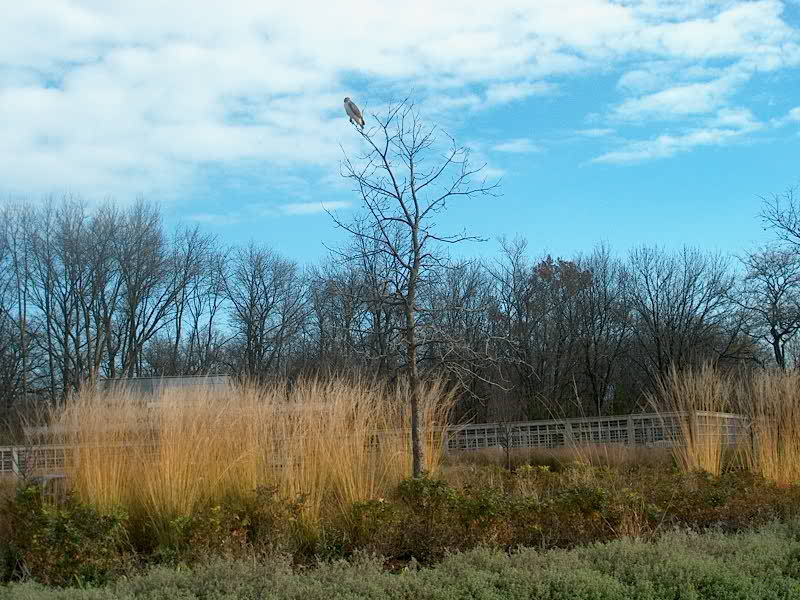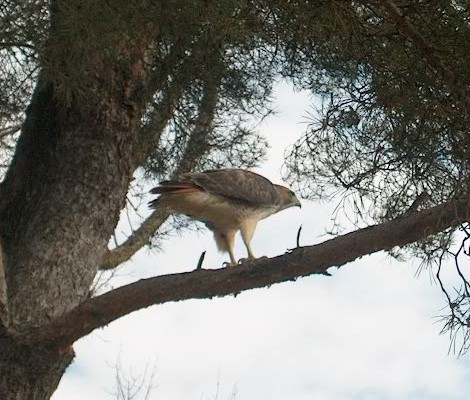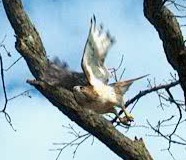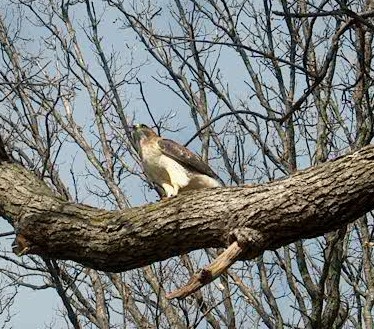Thursday, November 1, Garden education staff watched a large red-tailed hawk hunting small animals on the Learning Campus.

 This is a perfect place for these raptors. They can soar over the open lawn searching for small mammals, and when they catch a vole, rabbit, or other creature, they can safely retreat to a high branch of a nearby trees to devour their prey.
This is a perfect place for these raptors. They can soar over the open lawn searching for small mammals, and when they catch a vole, rabbit, or other creature, they can safely retreat to a high branch of a nearby trees to devour their prey.
We watched it catch two small animals – probably mice or voles – within about ten minutes. It ate one of these unfortunate animals while perched in the pine tree pictured at the left and the second in the oak limb, pictured below.
You may see more hawks now and through winter than you do in spring and summer. According to The Cornell Lab of Ornithology, there is a population of red-tailed hawks that live in our area year-round, but in late fall other hawks from far north fly into the area and join them during the winter. We must have more of the animals they like to eat.
Come to the Garden this month to see our fall gardens, but remember to look up in the sky, because it’s likely that you’ll also see a hawk!


